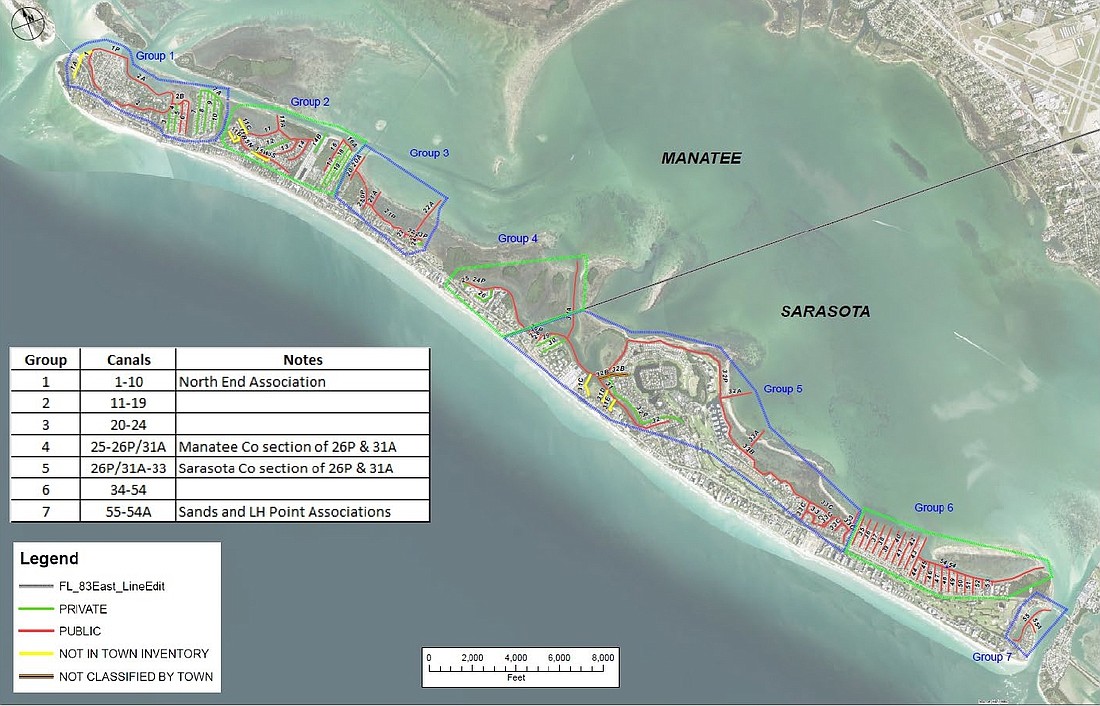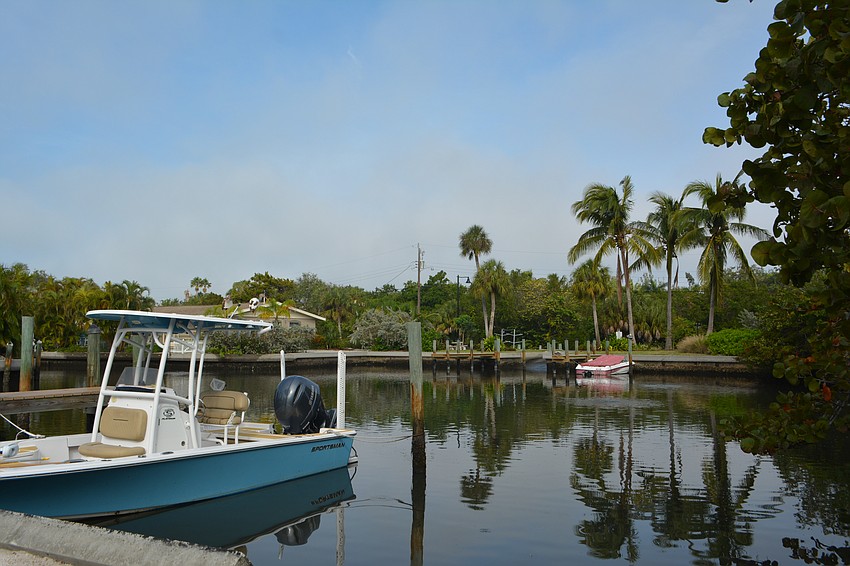- July 26, 2024
-
-
Loading

Loading

Implementation of a canal navigation maintenance program in Longboat Key is still a couple of years from reality.
The subject first arrived in front of commissioners in February 2020. At that time, town staff presented a review of canal projects and the town’s history of attempts to develop a canal dredging program.
In March 2021, staff updated commissioners further and included how they believed the town’s 81 canals could be categorized. The canals are of high importance to the town as they are part of its amenities and ambiance that visitors and residents adore.
Implementing an ongoing dredging program would alleviate the need for major dredging projects every few years. The last major dredge the town completed was in 2003 and included about 30 canals.
“One of the components we have always wanted addressed here is not only the funding but a monitoring program,” Taylor Engineering Senior Advisor Cliff Truitt said. “There would be some kind of periodic monitoring of an event and thresholds established, so that we would know in advance when you needed to implement another (dredging) project.”
Categories canals were separated into include:

To the town, canals are just as important as its beaches and should be cared for the same way as other “critical infrastructure.”
“We are a boating community; we’re a water community and this is one of those areas that is of particular interest,” Town Manager Howard Tipton said.
Taylor Engineering and its subcontractor, Anser Advisory, were hired to help the town develop an assessment program to fund localized canal navigation maintenance and capital improvements that will be collected on the November 2024 tax bill.
Since it has been about 20 years since the last town dredging project, which was estimated to have covered less than half of today’s canal inventory, the true condition of every canal is unknown.
“The data we were looking at when we were initially talking to you all was from 2016,” Longboat Key Programs Manager Charlie Mopps said. “It’s 2023; it’s been seven years. That means seven years of shoaling, seven years of water moving around out there. We don’t know what they look like.”
Establishing a funding mechanism to move the program forward is the first step in Mopps and the Public Works department being able to gather information on the true condition of town canals.
Certain canals are in worse condition than others and may need immediate attention, but unfortunately, without the program, Public Works does not have the resources needed to fund emergency dredging.
At the commission’s March 20 regular workshop, the town consultants mapped out a potential path forward to develop and implement a townwide canal navigation maintenance program and how to fund it. Work was divided into three phases.
For phase one, all efforts of Taylor Engineering and Anser Advisory have been completed. The consultants reviewed information provided by the town that detailed both the beach nourishment and underground utility work. All canals were classified as either public or private ownership and were separated into seven groups to help facilitate maintenance logistics.
The seven groups were developed based on location, construction logistics, homeowners associations, whether the property falls in Manatee or Sarasota County and with staff review and input.
Phase two includes developing the funding program. Work in this phase is still ongoing and will include estimations of program implementation costs and methodology to distribute those costs to the appropriate canal groups.
For example, perimeter and access canals are largely public property and are recommended for funding through the town’s general fund.
Community outreach is scheduled for the phase to ensure all canal-fronting property owners and homeowners associations are included in discussions and are aware of plans.
Phase three is the program’s implementation and is expected to run into 2024. Updating and developing assessment rolls, which are lists of assessable properties in a given community, is one of the primary tenets of the phase. Others include developing an ordinance and rates to charge for the work. Once the final rolls are completed, Anser Advisory will send them to Sarasota County and Manatee County tax collectors by Sept. 15, 2024.
However, the commission must adopt a resolution of intent by Dec. 31, 2023, for the town to reap the benefits of the program’s inclusion on the November 2024 tax bill.
However, commissioners expressed concern with the seemingly fast approaching deadlines. Per the current timeline, development of estimated costs would begin as early as April and rates calculated as early as October.
“This just seems totally aggressive to get all that done in a couple of months before we go on recess for a couple months,” Vice Mayor Mike Haycock said. “What I am suggesting is to look at that timeline based on the input and let’s have one that is realistic that we think we can really make, even if it takes us an extra year to get this right.”
Commissioners were assured by staff and consultants that adoption of the resolution of intent does not bind them to completing development of the program within a set timeline. If needed, additional time can be given and another resolution of intent can be adopted by the end of 2024.
“As we start going through the process and if it looks like we need to gain more public input then we would absolutely do that,” Mopps said.
Taylor Engineering and Anser Advisory provided a detailed timeline of when benchmarks for program implementation would need to be met, if commissioners wanted them to move forward with the expedited timeline.
For example, the adoption of the initial assessment resolution would need to occur between March and June 2024. Adoption of the final resolution is set in the timeline for between May and July 2024.
"You're not adopting and imposing an assessment until next year," Town Attorney Maggie Mooney said. "... People will know when to show up and be heard. ... The population, the residents will have over a year to come and be heard and register their concerns."